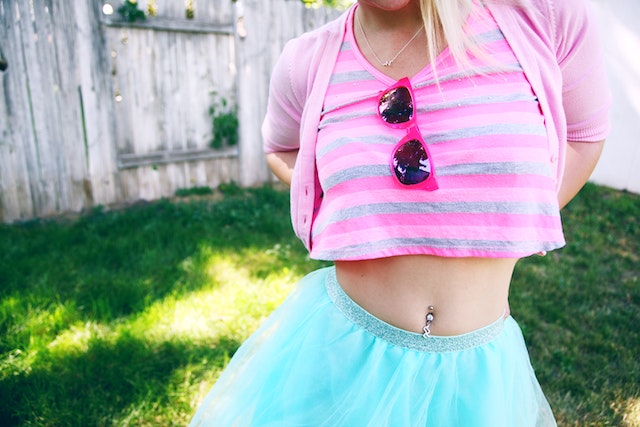Belly button piercing, also known as navel piercing, is a popular form of body modification that involves inserting jewelry through the skin surrounding the navel. It is a fashionable and trendy way to express personal style and enhance one’s appearance. However, before you decide to get a belly button piercing, it’s important to gather all the necessary information.
The Process of Belly Button Piercing
Step 1: Choosing a Professional Piercer
Selecting an experienced and reputable piercer is crucial to ensure a safe and successful piercing. Look for a licensed piercer who follows strict hygiene standards and uses sterile equipment. Don’t hesitate to ask for recommendations or check online reviews to find the best piercer in your area.
Step 2: Preparing for the Piercing
Before getting your belly button pierced, it’s essential to take certain precautions. Make sure to eat a healthy meal a few hours before the appointment to avoid feeling lightheaded. Additionally, wearing loose-fitting clothing will allow easy access to the piercing area during the procedure.
Step 3: The Piercing Procedure
When you arrive at the piercing studio, the piercer will explain the entire process and answer any questions you may have. They will mark the spot where the jewelry will be inserted and clean the area with an antiseptic solution. A hollow needle will then be used to create a small hole, followed by the insertion of the chosen jewelry.
Step 4: Aftercare Instructions
Proper aftercare is crucial for the healing process and to prevent infections. The piercer will provide you with detailed instructions on how to clean the piercing, which typically involves using a saline solution or mild soap. It’s important to avoid touching the piercing with dirty hands and to refrain from swimming or exposing it to harsh chemicals until it has fully healed.
Which Is Better, Top Belly Button Piercing Or Bottom Belly Piercing?
If you’re looking for a specific recommendation between a top belly button piercing or a bottom belly piercing, I suggest considering a bottom belly piercing.
A bottom belly piercing, also known as a traditional navel piercing, is a popular choice among many individuals. It offers a classic and timeless look that can complement a variety of styles. The jewelry is placed through the skin below the belly button, creating a subtle and elegant accent. This type of piercing tends to be less prone to movement and irritation compared to a top belly button piercing.
Choosing the Right Jewelry
Selecting the right jewelry for your belly button piercing is essential to both comfort and style. There are various options available, including curved barbells, captive bead rings, and dangle belly rings. Make sure to choose jewelry made from high-quality materials like surgical-grade stainless steel or titanium to minimize the risk of allergic reactions.
Potential Risks and Complications
As with any body modification, there are potential risks and complications associated with belly button piercing. These include infection, allergic reactions, migration or rejection of the jewelry, and scarring. By following proper aftercare instructions and choosing a professional piercer, you can minimize these risks significantly.
Healing Process and Duration
The healing process for a belly button piercing can vary from person to person. On average, it takes about six to nine months for the piercing to fully heal. During this time, it’s crucial to follow the aftercare instructions diligently and avoid any activities that may irritate the piercing.
Frequently Asked Questions (FAQs)
Does belly button piercing hurt?
The level of pain experienced during a belly button piercing can vary from person to person. Most people describe it as a brief pinch or stinging sensation.
Can I go swimming with a belly button piercing?
It is generally recommended to avoid swimming until the piercing has completely healed. Pools, hot tubs, and natural bodies of water can introduce bacteria, increasing the risk of infection.
Can I change my belly button jewelry during the healing process?
It is advised to wait until the piercing has fully healed before changing the jewelry. Prematurely changing the jewelry can disrupt the healing process and increase the risk of complications.

